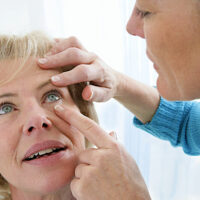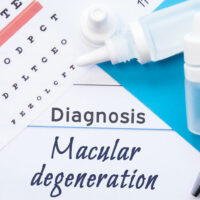12 common fashion mistakes to avoid

It is natural to get tired of one’s old outfits and seek a wardrobe change every once in a while. Staying on top of the latest fashion trends helps explore new styles and designs and prevent boredom. It is a good idea to review one’s wardrobe frequently, discarding outfits one seldom wears and making way for new ones. In addition, avoiding certain fashion mistakes can help one facilitate a trendy, versatile wardrobe:
Owning only retro outfits
Bell bottoms and maxis were a thing of the past, but several other fashion trends have emerged over the decades. Hence, while it is a good idea to own some of these retro outfits, one should consider having a wardrobe with different types of ensembles, including the ones currently in fashion.
Not wearing the right make-up and accessories
Pairing the wrong accessories and following incorrect make-up techniques with even the best ensembles can single-handedly bring down the overall look. For instance, applying too much foundation or compact to conceal wrinkles and fine lines can cause the face to appear cakey. Hence, understanding the right make-up application skills is essential to ensure a subtle and elegant look. Selecting the right accessories, footwear, and jewelry is also important to complete one’s final look. One should carefully organize footwear, accessories, etc., based on the types and colors of outfits these should be paired with.
Not taking proper care of outfits
No matter how fashionable and elegant one’s ensembles may be, maintaining these clothes is essential to ensure their durability. First, it is essential to check out the washing instructions mentioned on garment labels before washing them. For instance, certain clothes made of delicate fabric should be hand-washed or dry-cleaned. Additionally, non-abrasive solutions, like baking soda or vinegar, should be used to remove any stains before washing clothes in the laundry.
Wearing ill-fitting clothes
Clothes that do not fit well can cause wear and tear and may not be as durable as they should. Sometimes, choosing clothes of the right sizes can be challenging, especially when one is shopping online. In such cases, one should read the size chart carefully and be as specific as possible with regard to one’s size. Moreover, it is important to check the exchange and return policies on e-commerce websites to ensure that outfits can be returned or exchanged if they do not fit.
Owning outfits that one seldom wears
Clothes that one does not wear often take up space in the wardrobe without serving any purpose. Thus, a wardrobe review is essential to discard clothes one does not wear often and make space for new, more interesting outfits.
Not considering sustainable fashion
Several sustainable fashion brands have emerged today, with the initiative to protect the planet and help buyers make environmentally conscious fashion choices. Many of these brands integrate sustainability with trend, visual appeal, and price perfectly. Hence, it is a good idea to check out sustainable clothing brands and browse information on a brand’s manufacturing process while shopping. Third-party certifications of a brand as “sustainable” can also play a role in helping one shortlist sustainable brands.
Overlooking bra size and panty lines
Visible panty lines can spoil one’s look considerably; moreover, wearing a bra of the wrong size can cause one’s breasts to appear saggy. Therefore, it is important to try out bras before purchasing them to ensure they are of the right size and fit. Further, wearing a thin-lined panty underneath light-colored trousers can prevent panty lines from being visible. One should stock up on undergarments that fit well and can be coordinated with specific outfits.
Owning fuzzy sweaters
Sweaters with fuzz are signs that they have been overused and not maintained well. Hence, these sweaters should be replaced or discarded.
Not dressing according to the occasion
Dressing for an occasion is as essential as stocking up well-designed outfits. Thus, it is a good idea to list down possible occasions and situations for which one would require suitable outfits and shop accordingly. For instance, one would require formal shirts, trousers, pencil skirts, etc. for office wear. However, such outfits would seem out of place at a theater or casual family get-together. Thus, casual tees, shorts, denims, etc., would be required for such casual outings. One should also consider the climatic conditions of places one resides while shopping for clothes.
Washing jeans frequently
It is advisable to wash jeans and denim outfits once every six weeks. Washing them frequently can cause them to wear out quickly, decreasing their durability. Care instructions mentioned on denim and jeans labels should be read carefully.
Compromising on quality for cost and vice versa
A common mistake buyers make is to compromise on quality to save a few dollars or, conversely, splurging on clothes without planning one’s finances adequately. In the first scenario, one is likely to end up spending a large sum eventually to replace substandard-quality clothes with better ones. Hence, spending a few dollars more to buy superior-quality, branded outfits is better. On the other hand, not considering one’s finances before shopping can burn a hole in one’s pocket. Thus, one should research the standard prices of particular outfit categories and set a budget limit before going shopping.
Overlooking the importance of layers
Many individuals focus solely on the main outfits like tops, shirts, and trousers, ignoring embellishments like coordinated coats and shrugs. These layers can enhance one’s look considerably and transform a basic ensemble into a style statement. Therefore, one should shop for coats, shrugs, jackets, hoodies, etc., considering the colors and types of clothes one owns.
A complete look requires careful consideration of various aspects, from the outfit colors and sizes to coordinated accessories, footwear, and make-up. The key is to strike the right balance between the existing trends and one’s preferences while sticking to a budget range.





